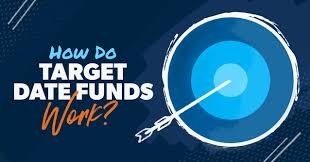A Target-Date Fund is a mutual fund or exchange-traded fund (ETF) structured to grow assets over a specific time frame, culminating in a target date such as retirement. It simplifies investing by offering a one-stop portfolio that adjusts over time.

Structure and Composition:
- Multi-Asset Portfolio: TDFs typically invest in multiple asset classes such as domestic and international stocks, bonds, real estate, and cash equivalents.
- Lifecycle Strategy: The fund’s composition changes dynamically based on the investor’s lifecycle, starting with aggressive growth and moving towards capital preservation.
Lifecycle Stages of a Target-Date Fund:
- Accumulation Phase:
- Heavy allocation in equities and growth-oriented assets.
- Focused on capital appreciation and long-term growth.
- Transition Phase:
- Gradual shift from stocks to bonds and stable income assets.
- Reduces risk exposure as the target date draws closer.
- Distribution Phase:
- Post-target date, the fund stabilizes with a focus on income generation.
- Balances inflation protection with low volatility assets.
Advantages of Target-Date Funds:
- Professional Management: Managed by financial experts who adjust the fund according to the investment timeline.
- Automatic Rebalancing: Maintains the desired asset mix by rebalancing periodically.
- Predictable Planning: Helps investors plan for future financial needs with a clear end goal.
- Time Efficiency: Reduces the need for active monitoring, especially beneficial for novice investors.
Risks and Challenges:
- Market Fluctuations: Exposure to market risks, particularly in the early phase when equity holdings are higher.
- One-Size-Fits-All Risk: The fund may not align perfectly with an individual’s specific financial situation or risk tolerance.
- Glide Path Variability: Different funds follow different glide paths, leading to variability in risk and returns even with the same target date.
Choosing the Right Target-Date Fund:
- Evaluate the Glide Path: Ensure the fund’s risk strategy aligns with your comfort level.
- Check Expense Ratios: Lower costs can significantly impact long-term returns.
- Understand Underlying Assets: Review what the fund invests in, including geographic diversification and sector exposure.
- Compare Performance History: Analyze past performance relative to peers, though not a guarantee of future results.
Popular Use Cases:
- Retirement Savings Plans: Frequently used in 401(k) plans for employees seeking a simplified investment approach.
- College Savings Plans: Can be used for education savings accounts with a defined withdrawal timeline.
- General Long-Term Goals: Suitable for any financial goal with a specific future date.